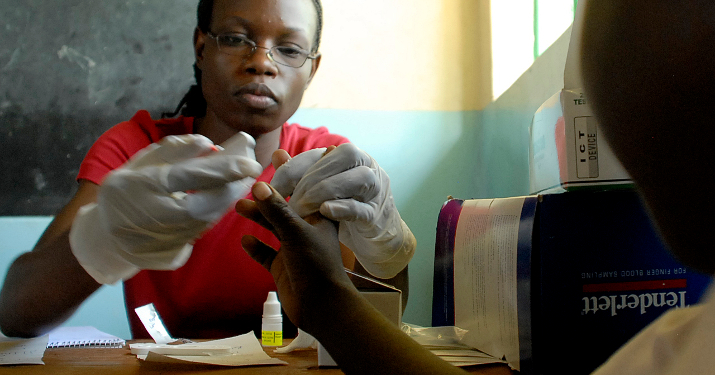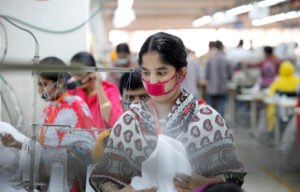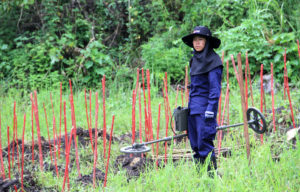
Photo: Foto: Rick Scavetta, U.S. Army Africa (CCBY)
The world could be free of malaria in 25 years
A new report shows the way to a world free of malaria as early as 2040. It will require a whole new approach, and developing countries will have to contribute more.
Share
Other categories
Thanks to great progress in the war against malaria in the last 20 years, the dream of a world completely free of this deadly disease is now within reach, and could be a reality as early as 2040. This is one of the conclusions of a recent report from the Bill and Melinda Gates Foundation, a private humanitarian organisation funded by the world’s richest man, Bill Gates.
In the report, the organisation puts forth an estimate on what it would cost to eradicate the disease completely world-wide, and suggests various ideas for how it may be done in practice. The vision in Gates’ report is even more ambitious than the malaria target in the recently ratified Global Goals, which aim to end the malaria epidemic before 2030, but do not explicitly state that the disease must cease to exist.
Already halfway there
The world’s nations have been wanting to end malaria for many years. As early as 1955, the World Health Organization (WHO) decided to do away with the disease, and millions of houses worldwide were sprayed with insecticide to kill the mosquitoes that transmit the infection.
These campaigns were initially successful, and 24 countries managed to rid themselves of malaria. But the great confidence that insecticide alone would defeat the disease meant that not enough resources were allocated to basic research in medicine and anti-malaria technology. As progress was made, political backing for the eradication campaigns started to dwindle, until the WHO paused the initiative in 1968.
The turn of the millennium has seen renewed efforts to fight many of the world’s worst diseases, including malaria. The United Nations agreed in 2000 to stop the spread of malaria, and to start reversing the illness before 2015.
This renewed focus has seen a lot of success, and the world malaria mortality rate (the number of deaths from malaria for every 100.000 people) has decreased by 47 percent since 1990. This amounts to saving about 6.2 million human lives, and the world is now at the lowest level of malaria in recorded history, according to the Gates Foundation. More than 100 countries have eradicated malaria so far, and history shows that the disease only very rarely returns after being extirpated from a country.
The fight to the finish
Despite this success, an estimated 472,000 people still die from the disease each year, and the coming five years will be crucial to the future of malaria in the world, according to the Gates report. The numbers of infected must be decreased further, from 600 million in 2015 to 300 million in 2020. This will make it possible to focus efforts and reach another milestone in 2025, where only 100 million people should carry the disease. After that, it will take around 15 years of sustained effort to find and cure the world’s last malaria patients. In this final phase, it will be essential to keep the focus and political will to see the project through, avoiding a global relapse like in 1968.
Africa – treat thyself
According to the Gates Foundation, malaria campaigns should not be based on the traditional model, where big international donors raise a huge amount of money and spend it to set up isolated malaria clinics in far-flung rural areas. Rather, the fledgling health care systems of the developing world should be much more active and involved in finding and treating patients, while preventing further transmission.
This means that each country must achieve better statistical data, to get a better overview of where the problem is most severe. Doing so will let them focus their efforts more efficiently and also document progress towards the goal. To this end, developing countries must also contribute with a bigger part of the costs of the project. This is seen to become possible as African nations gradually move away from poverty. According to the World Bank, there are now 31 low-income countries in Africa south of Sahara, but in 2040, there are expected to be only nine. The Gates Foundation notes that there is already a trend among developing countries to invest more in malaria treatment, even though the biggest part is still paid by foreign donors.
A healthy investment
The combined costs of eradicating malaria will be huge. Gates Foundation estimates that the whole project will require a doubling of the already substantial global financing. In Africa, where the epidemic is most severe, it will cost around 3.5 billion dollars per year until 2035, when the costs are expected to fall to just under two billion per year, until 2040 when costs could fall to zero as malaria passes into the history books.
Despite the big price tag, the Gates Foundation believes it will be one of the best investments that humankind can make, since malaria is not only a disaster for the afflicted individuals, but also a huge burden on the economy of many countries, since people are unable to work when they are struck by the malaria fever.
The Indian economist Ramanan Laxminarayan, who teaches Economy at Princeton University, has estimated that every dollar spent on malaria treatment will yield an economic return of 36 dollars, if the global malaria epidemic is halved. If we succeed in eradicating the disease completely, it will mean a boost of two trillion (two thousand billion) dollars to the world economy, not to mention saving at least 11 million lives throughout the following 25 years.
New technology and medicine
In 1990, the future of malaria treatment seemed bleak, because the disease was becoming resistant against the most widespread types of medicine, and because key technology, such as rapid diagnostics, and mosquito nets treated with long lasting insecticide, was not yet available. But a wave of new treatments and technique changed this, and the research is ongoing. There has never before been so many new malaria products in the pipeline as there are now, including new methods to diagnose, prevent, and treat the disease.
In the short term, the Gates Foundation highlights the prospects of more effective medicine, which will be able to kill all malaria parasites in a patient’s body with only one single dose. This is important, because existing malaria medicine can only kill a part of the parasites with each treatment, making it necessary to repeat the course several times. Longer treatments are more expensive and complicated, and many patients can be tempted to stop the course when they feel better, but before being fully cured. The patient then relapses, and needs another course of treatment, which builds immunity in the malaria parasite. All can be avoided using the new treatment options, which are expected to be available around the year 2020. The same year, new and more sensitive diagnostics are expected, making it possible to detect the disease before the patients develop the first symptoms.
In the longer term, there’s hope for proper vaccines against malaria, either by preventing the malaria parasite from multiplying in the blood stream, or by preventing it from crossing into the blood stream in the first place. Scientists are also looking into if it might be possible to fight the mosquitoes by genetic means, which could be very effective and also decrease the use of insecticides.







